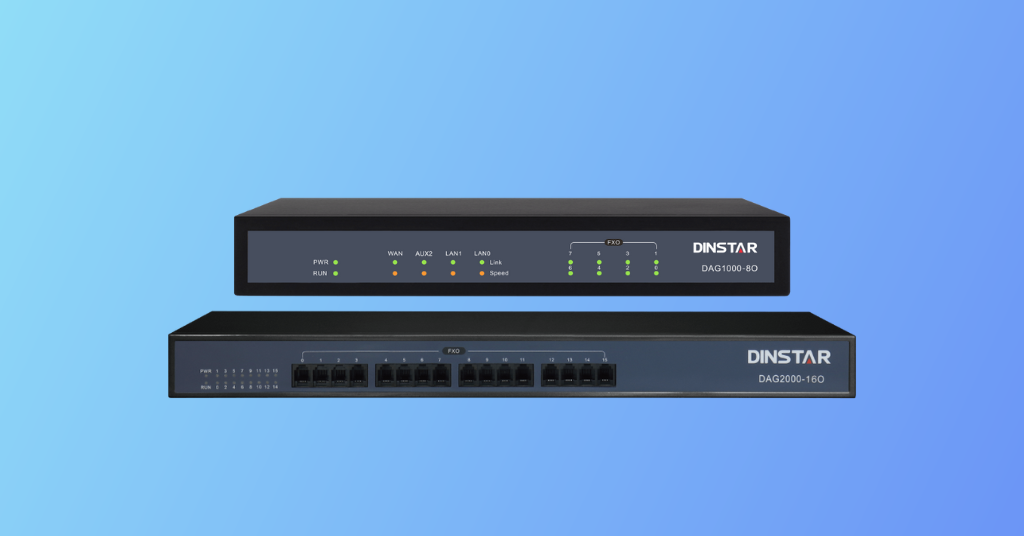In today’s fast-evolving communication landscape, businesses are rapidly shifting from traditional telephony systems to VoIP (Voice over Internet Protocol) solutions. However, many organizations still rely on analog phone lines or legacy PBX systems. This is where an FXO Gateway becomes a vital component—it acts as a bridge between the analog and IP worlds, ensuring seamless communication and cost-effective operations.

Let’s explore what an FXO Gateway is, how it works, and why it’s essential for modern businesses.
Understanding the FXO Gateway
An FXO Gateway (Foreign Exchange Office Gateway) is a hardware device that connects analog telephone lines (PSTN) to a VoIP network. In simple terms, it allows standard analog phone lines to communicate over IP-based networks, enabling businesses to retain their existing phone lines while enjoying the benefits of VoIP technology.
Each FXO port on the gateway connects to a PSTN line, allowing users to make and receive calls through the traditional phone network while managing those calls via VoIP systems such as an IP PBX or SIP server.
So, if your office still uses analog lines for voice communication but wants to switch to VoIP without losing your phone numbers or infrastructure, an FXO Gateway is the ideal solution.
How Does an FXO Gateway Work?
To understand how an FXO Gateway functions, let’s break it down step by step:
- Connection to PSTN Lines
The FXO Gateway connects to analog PSTN lines using RJ-11 connectors. Each FXO port corresponds to one telephone line from the service provider.
- Conversion of Analog to Digital Signals
When a call is made, the FXO Gateway converts the analog voice signal from the PSTN into digital packets. These packets are then transmitted over the IP network using VoIP protocols like SIP (Session Initiation Protocol) or H.323.
- Integration with IP PBX or VoIP Systems
The digital voice packets are sent to an IP PBX or VoIP server, where call routing, management, and distribution take place. Similarly, incoming VoIP calls can be routed to analog lines through the FXO ports.
- Call Management and Routing
The gateway manages call setup, signaling, and termination. It ensures that calls are routed properly between analog and IP networks, maintaining call quality and minimizing latency.
In essence, the FXO Gateway works as a translator that converts and manages communication between traditional phone systems and modern VoIP networks.
Key Features of an FXO Gateway
An FXO Gateway offers several advanced features that make it indispensable for businesses upgrading their communication infrastructure:
- SIP Protocol Support – Ensures compatibility with most IP PBX systems and VoIP service providers.
- Call Routing and Failover – Automatically redirects calls during network failures or busy lines.
- Voice Compression Codecs – Supports popular codecs like G.711, G.729, and G.723 for high-quality audio transmission.
- Caller ID and Call Waiting – Provides seamless call management features similar to traditional telephony.
- Web-Based Management – Offers easy configuration and monitoring via a user-friendly web interface.
- Scalability – Available in different port configurations such as 4, 8, 16, or more FXO ports, depending on business needs.
These features allow businesses to integrate, manage, and expand their voice systems efficiently.
Benefits of Using an FXO Gateway
Implementing an FXO Gateway provides numerous operational and financial advantages:
- Cost-Effective Communication
Businesses can continue using existing analog lines while gradually adopting VoIP systems, reducing upfront costs.
- Smooth Transition to VoIP
It offers a hybrid communication environment where both analog and IP phones can coexist, simplifying migration.
- High Call Quality and Reliability
Advanced echo cancellation and compression technologies ensure crystal-clear voice quality.
- Improved Flexibility and Scalability
Companies can easily add more lines or upgrade their network as their communication needs grow.
- Business Continuity
Even if the internet connection fails, the FXO Gateway ensures that calls can still go through the analog PSTN lines.
Use Cases of FXO Gateways
FXO Gateways are widely used across industries that require reliable and cost-effective voice connectivity. Common scenarios include:
- Small and Medium Enterprises (SMEs) integrating legacy PSTN lines with IP PBX systems.
- Hotels and Hospitality sectors connecting analog room phones to a centralized VoIP system.
- Call Centers managing local PSTN trunks for regional calling.
- Remote Branch Offices that need to maintain local landline connectivity while using a centralized IP PBX.
- Enterprises with Gradual Migration Plans moving from analog to full VoIP setups.
This flexibility makes FXO Gateways an essential tool for organizations balancing between legacy infrastructure and modern communication technologies.
Choosing the Right FXO Gateway
When selecting an FXO Gateway for your business, consider the following factors:
- Number of FXO Ports – Choose based on how many PSTN lines you need to connect.
- Compatibility – Ensure it supports standard SIP protocols for seamless integration.
- Audio Quality – Look for gateways with echo cancellation and high-quality codecs.
- Network Management – Prioritize models offering web GUI or remote management.
- Reliability and Support – Opt for a trusted brand that offers firmware updates and technical support.
Selecting the right device ensures you get maximum performance and value from your VoIP setup.
Conclusion
An FXO Gateway is the perfect bridge between traditional telephony and modern VoIP communication. It enables businesses to retain their analog infrastructure while leveraging the advanced features of IP telephony—offering flexibility, cost savings, and superior call management.